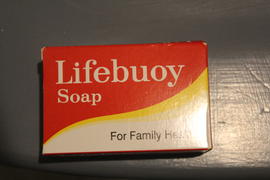Lampedusa
40 Archival description results for Lampedusa
This brand of soap generated many memories for the fishermen and the women of Lampedusa. This used to be bought in Malta during their travels and taken back home to their families.
This document shows a list of the navigation trips that Ettore Raffi did between 1955 and 1977.
This religious icon represents Our Lady of Lampedusa, also known by the name of Madonna di Porto Salvo. This image is related to the oral history interview from 01:36:00 hours onwards, wherein the interviewee spoke about the statue.
These postcards represent Our Lady of Trapani and Our Lady of Lampedusa. This image is related to the interview from 01:39:00 until 01:40:00 wherein Giovanni Fragapane speaks about the relationship between Our Lady of Trapani and Our Lady of Lampedusa.
During the interview, Salvatore Davì focused on his life experiences both in Lampedusa and in Malta. He lived in Lampedusa until 1968. That year he met his future Maltese wife and subsequently relocated to Malta in 1970. During the interview he spoke about the exchange of products between the two Islands. He also described how he adapted to life in Malta and how he managed to integrate with the Maltese. He spoke about Salvatore Gervaso and the Stella di Mare company, two names which are important for the theme 'The Malta-Lampedusa Connection.' His memories about the British, Valletta, Marsaxlokk and the Dom Mintoff administration were positive. However, contraband was a problem.


















